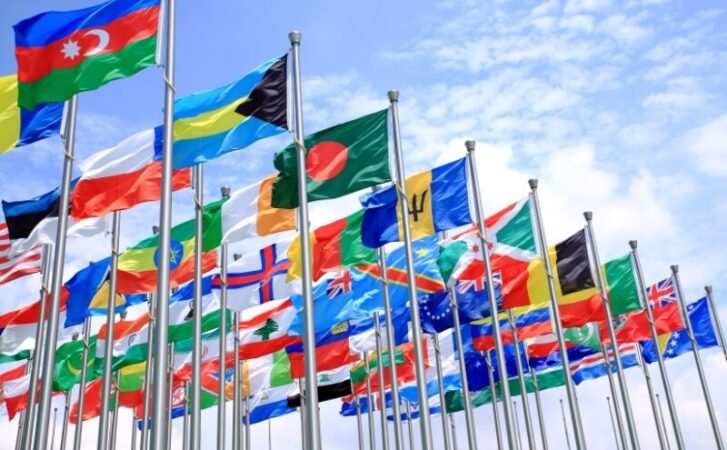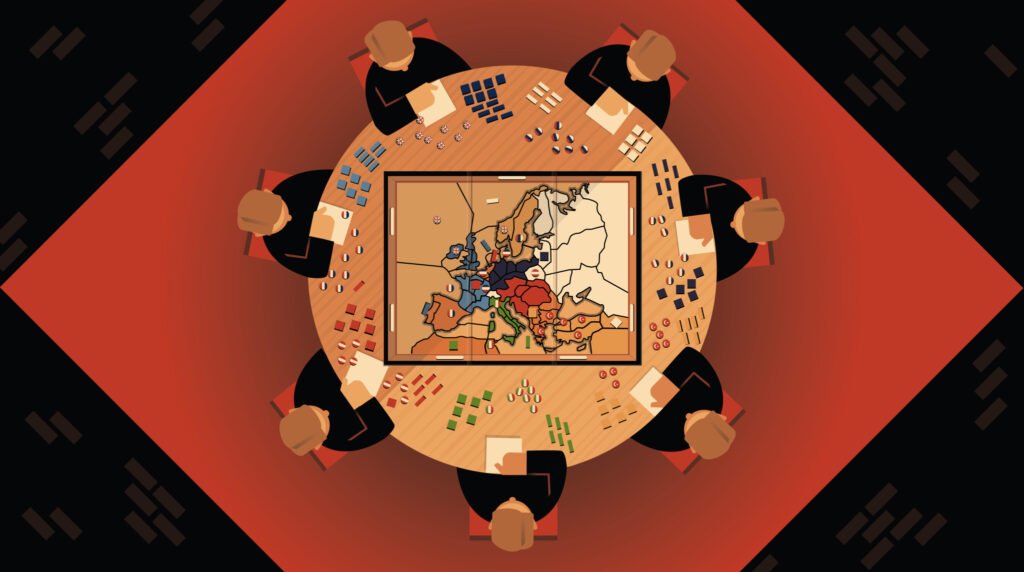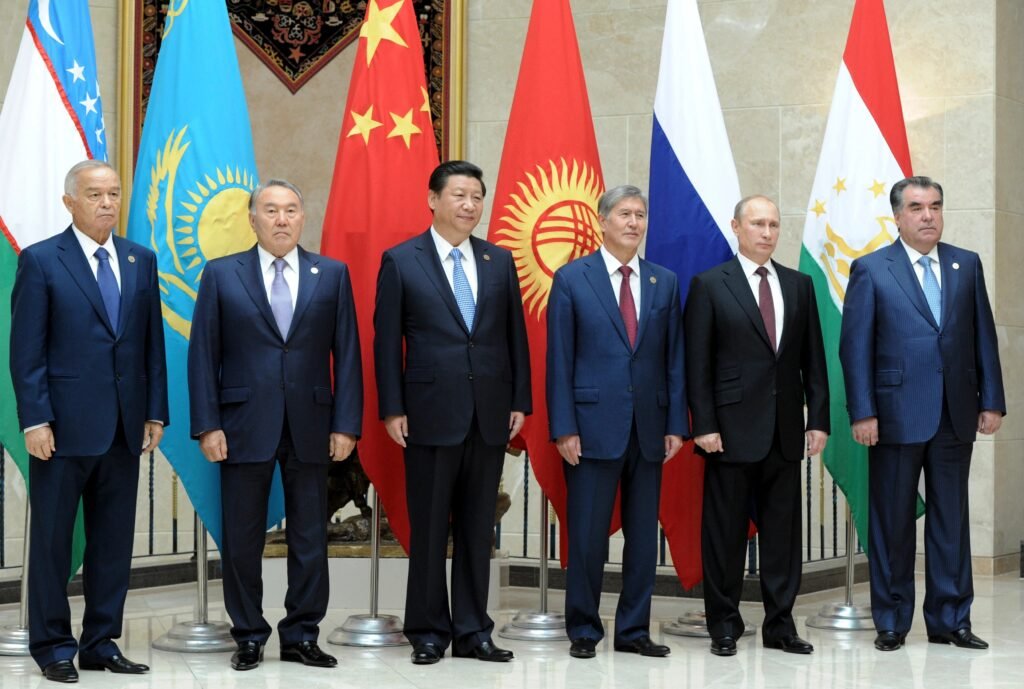
On The Chinese Threat To Global Peace – OpEd
American economist Geoffrey Sachs (Columbia University and an expert on economic development and poverty) considers geography of nations as a true driver of economic development “because it affects the profitability of various kinds of economic activities, including agriculture, mining, and industry; the health of the population; and the desirability of living and investing in a particular place…. As human-led climate change progresses, many regions could well be hit by devastating environmental shocks, such as heat waves, droughts, and floods, that are far beyond their control” (Foreign Affairs Sept/Oct 2012).
Sachs counters monocausal theory of Daron Acemoglu and James Robinson’s (Why Nations Fail) that governments that protects property rights and represent their people lead their economies to prosperity and those that do not end up with stagnant and declining economies. State capitalism that promoted the economic development of South Korea during Park Chung Hee’s military regime coupled with those of China, Taiwan, Vietnam belie the claim that only capitalism with Western values can lead the country to prosperity.
RISE OF CHINESE ECONOMY
China today is the second largest economy in the world though its growth has been recently arrested by the outbreak of coronavirus disease that has virtually quarantined the country from the rest of the world. Given the fact that China accounts for 16% of the global output the disease is bound to have global impact in particular small Asian countries linked to China who do not have sufficient cushion to absorb the ill effects and may slide into recession. A Reuter report sounds an optimistic note (London 20th February) to the effect that epidemics normally have a severe but relatively short-lived impact on economic activity, with the impact on manufacturing and consumption measured in weeks or at worst a few months.
Even pandemics such as the Black Death , Spanish influenza , Asian influenza and Hong Kong influenza that caused large numbers of deaths had a brief impact on the economy.
China’s coronavirus outbreak should conform to this pattern of a severe downturn followed by swift recovery, provided it does not initiate a broader cyclical slowdown in the already-fragile global economy. China witnessed an economic growth of 6.1 per cent in 2019, the slowest in recent years. And the International Monetary Fund expects it to slide further to 6 per cent and 5.8 per cent in the next two years. The Coronavirus strike will impact consumer spending in China, which may further impact the economy and the trade pacts with the US.
The Federal Reserve Bank chief Jeremy Powell considers China’s economy as very important in the global economy now, and when China’s economy slows down it is felt by the USA though less than countries near to China or those actively trading with China like some Western European countries. Coronavirus aside one may question the efficacy of state capitalism as a strategy for economic growth.
The recent Bangladesh government decision fixing deposit and lending rates by banks and post offices has been described as “financial repression’” (Financial Express 12-02-2020) that may cause significant drag on growth, according to a study, ranging between 0.4 to 0.7 % of the GDP. This repressive approach was justified by some governments on John Maynard Keynes’ argument to distinguish between investment for productive purposes and those for speculation.
Such an approach has been criticized by another school of economists who opposes artificial imposition of ceilings to encourage investment and calls for market forces to determine the preferred rate of interest and encourage competition among banks and financial institutions.
Joseph Stieglitz (The Great Divide 2012) has argued that inequality results from conscious political decisions which results in a world of super-rich, a vanishing middle class and growing poverty.
Stieglitz also questions the efficacy of a government that embraces political capitalism—a system where the rich and the powerful influences government choices that in Hobbesian terminology ends up as being “nasty brutish” and ultimately selfish and protects the interests of their own class.
Political capitalism can also be defined as an economic and political system in which the economic and political elite cooperate for their mutual benefit. Bangladesh has had the highest rise in its ultra- wealthy population, surpassing any other country in the world. If Bangladesh had 100 super rich in 2012, for example, the number should stand at 219-220 by 2017.
In other words, the number of super-rich more than doubled in our country in just five years. At the same time defaulted loans despite easier payment terms accorded to the defaulters has not eased the problem of loan default. Billions of dollars are suspected to have been siphoned off to safe heavens abroad. According to Global Financial Integrity Report 2017, Bangladesh topped the list of least-developed countries in terms of “illicit financial flows”.
Truly Joseph Stieglitz’s observation on “A banking system is supposed to serve society, not the other way around” appears to have fallen on deaf ears. Yet incontestably Bangladesh economy broke through a period of stagnation and even regression through robust export of garments and remittance of Bangladeshis working abroad and today has become the third fastest growing economy in the world.
Bangladesh apparently is doing well. Yet apart from growing inequality in the distribution of income one would be well advised to bear in mind the dystopian pictures drawn by MIT husband and wife team (The Limits of Growth-1972) of the world facing an “over shoot and collapse” by 2100 unless the world took seriously the environmental and resource issues. According to them to feed the continued growth in industrial output there must be ever-increasing use of resources. But resources become more expensive to obtain as they are used up. As more and more capital go towards resource extraction, industrial output per capita starts to fall – in the book, from about 2015.
As pollution mounts and industrial input into agriculture falls, food production per capita falls. Health and education services are cut back, and that combines to bring about a rise in the death rate from about 2020 (The Guardian 2nd September 2014).
The emerging economies in particular those in South Asia should take lessons from these discourses. Inequality should not be allowed to fester. Growth that does not serve the interest of the majority of the population means only economic figures. The world — both the developed and the developing — should strive for gender equality. Climate change should be a central issue in international conversations.
Political capitalism — a momentary solution of economic woes — cannot be the hall mark of economic growth. Social Darwinism, the popular theory in the late 19th century that life for humans in society was ruled by “survival of the fittest,” that helped advance eugenics into serious scientific study in the early 1900s has to be avoided at all cost because the world cannot afford another Hitler.
One hopes that Chinese leader Xi-Jin Ping would not challenge the global stability that the world needs badly at this moment if Russian invasion of Ukraine. Already Sino-Russian front has been formed to face the Western and other freedom loving people of the world. History teaches us that illiberal regimes do not last for long replaced by more cruel regimes or one that does not care for global condemnation.
Myanmar junta’s ignoring the world criticism of minority community in the country and atrocities committed against them is a case in point. The recent developments are no less alarming. Donald Trump’s anti-Chinese rhetoric became ineffective because his “America First” slogan put many Western countries in particular NATO countries in uncomfortable position almost being abandoned by the American security umbrella over their heads since the Second World War.
President Joe Biden in his one year in office is trying his level best to repair Trump’s damage yet giving no quarter to China. The best course will naturally be to bring down the temperature among adversaries. The news that talks between Russia and Ukraine to ease shipment of grains is a positive development.
PUTIN’S RED LINE IGNORED BY THE WEST
A way out will be to accept Putin’s position that Ukraine and countries which were in the Soviet orbit would join neither the Russian side nor the NATO or the European Union.
Added is the anti-Chinese formation of QUAD consisting of comprising, the 4 nations: The United States of America (USA), India, Japan, and Australia. This group first interacted in 2007 on the sidelines of the Association of Southeast Asian Nations (ASEAN). It is considered as specific nations coming along to find a common ground in being democratic nations and their interest of maritime cooperation through trade and security.
The Quad’s origin can be traced back to the 2004 Tsunami, when India conducted relief and rescue operations for itself and neighboring countries, with the US, Japan, and Australia later joining in. It was largely interpreted as a response to China’s growing economic and military might. It was initiated in 2007 by late Shinzo Abe, Japanese Prime Minister with the support of the Australian PM Johan Howard, the US Vice-President Dick Cheney and Man Mohan Singh, PM of India.
QUAD AND CHINESE THREAT
The Quad was viewed as retaliation towards increasing the military and economic power of China in the region. The participation of Australia agitated the Chinese as they helped Australia to drive out a defense agreement with the United States (outlined by Canberra Defense Blueprint of 2007).
As a result, Australia announced not to participate in the second round of the meeting. In 2010, Julia Gillard was elected as the New Zealand Prime Minister resulting in enhanced cooperation among interested parties. It led to the placement of Australia overlooking the Timor Sea and the Lombok Strait while US Marines stationed near Darwin.
In the period between cessation and restart of the Quad, the joint naval exercises continued between India, Japan and the US at trilateral levels. In ASEAN Summits of 2017 held in Manila , Japan invited India, Australia and the US to hold a joint meeting to revive the alliance and counter China, both diplomatically and militarily, in the South China Sea. The meeting of the naval chiefs of India, US, Australia and Japan at the Raisina Dialogue, 2018 in New Delhi indicated the revival of the security structure of Quad.
Following this, the four ministers gathered in New York and Bangkok in 2019 to discuss the reformation of Quad. In March 2020, the members of Quad had a meeting with the representatives from New Zealand, Vietnam and South Korea to discuss their approaches towards the coronavirus pandemic.
This new grouping of Indo-Pacific states was named the “Quad Plus” as encouraged by the US. In February 2021, Indian Prime Minister Narendra Modi addressed the virtual meeting of Quad hosted by the USA.
In September 24, 2021, Indian Prime Minister Narendra Modi along with Japanese and Australian counterparts attended the first in-person Quad meeting hosted by President Joe Biden.
It was believed that the grouping would act as “a force for global good” and would ensure prosperity and peace in the entire world.
The leaders of the two largest democracies of the world, India and the US, met at the White House for the bilateral meeting and discussed many priority issues, such as trade, combating of Covid-19, climate change and Indo-Pacific. It was an “important” meeting held at the beginning of the third decade of the century. A joint statement was released read that the grouping stands together for the rule of law, freedom of over-flight and navigation, territorial integrity of states and peaceful resolution of disputes Many analysts are underscoring the importance of the Quadrilateral Security Dialogue (QUAD) as a response to Chinese strategy in the region. The Quad is an informal strategic dialogue forum between India, Japan, the United States and Australia.
With India’s ongoing tussle with China and in the light of Chinese assertive behavior in regions in South China Sea and Indian Ocean Region (IOR), this clearly would make sense.
This ‘defense by denial’ capability needs to be strengthened by all the four countries and probably to some extent there has to be an integrated architecture of air and missile defense capability in IOR among the QUAD members to provide a credible deterrence against China.
An integrated missile defense architecture means that the four countries have to take a responsible role to initiate the process. So far, the United States has not been successful in developing integrated missile defense architecture in the Indo-Pacific region owing to the Japan-South Korea disputes. The United States is also struggling to develop integrated missile defense architecture amid the Gulf Cooperating Countries (GCC).
Even in the European Phased Adaptive Approach (EPAA), the United States is facing delays which is delaying the holistic integrating of the EPAA with NATO missile defense shield. Thus, how far the United States would be successful in integrating a missile defense architecture in which India would not be possessing the components of missile defense shield that the other three QUAD members would be possessing would be difficult to predict.
QUAD PLUS AND CHINESE THREAT
The QUAD would be further strengthened to include South Korea too. QUAD Plus include broader framework to deal with the Chinese threat- with countries like Vietnam and South Korea. India has welcomed the QUAD Plus initiative, but this initiative would require a greater cooperation between Japan and South Korea. In short, while the QUAD is strengthening an arrangement to counter China, the arrangement requires to be a holistic one to provide for its full promise as part of a deterrent approach to China (Debalina Ghosal 09-01-2020).
The most recent Indo-Chinese spat occurred on August 27 2022 slamming Chinese remarks on vessel visit. In a strongly worded statement the Indian High Commission reacted to recent remarks of the Chinese Ambassador to Sri Lanka, on the controversial visit of a Chinese military vessel in August 2022.
Chinese Ambassador Qi Zhenhong wrote in Sri Lanka media about countries “far or near bullying Sri Lanka”. The Ambassador had also observed that Sri Lanka overcame “aggression from its northern neighbor 17 times”. He had also connected U.S. House Speaker Nancy Pelosi’s visit to Taiwan with the “successful” docking of Chinese satellite-tracking vessel Yuan Wang 5 in the southern Hambantota port, and argued for China and Sri Lanka “jointly safeguarding each other’s sovereignty, independence, and territorial integrity”.
The Indian High Commission responded that “Opaqueness and debt driven agendas are now a major challenge, especially for smaller nations. Recent developments are a caution. Sri Lanka needs support, not unwanted pressure or unnecessary controversies to serve another country’s agenda.” Such incidents are expected to arise from time to time. But given the fact that China is far ahead of India repeating such incidents would not serve global peace which the world in particular the less developed economies crave.



